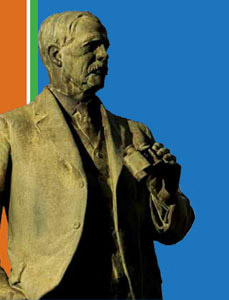Mildura Wharf - Mildura's Chaffey Trail
Mildura Wharf
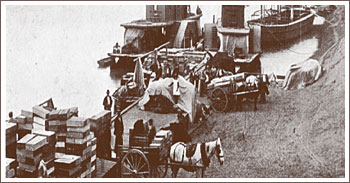 Mildura Wharf has been a vital part of the town and inland river transport system since the 1880s. It is the result of the actions of the Mildura Progress Committee, which was established in 1888 with its first project being to build a new wharf to assist the burgeoning river trade.
Mildura Wharf has been a vital part of the town and inland river transport system since the 1880s. It is the result of the actions of the Mildura Progress Committee, which was established in 1888 with its first project being to build a new wharf to assist the burgeoning river trade.
In July 1888 Mr A McPherson of Kerang was awarded a contract for ï½£828 to build a new wharf to replace the Chaffey landing stage, which serviced
the entire town. At 150 feet long, the wharf would cater for the anticipated increase in river trade. It opened in 1892 and a harbour master was appointed to oversee the port's operations. The wharf was extended in 1899 and three different levels built so that vessels could berth there regardless of the river's height.
The river trade finally ended in the mid-1930s when steam trains replaced river transportation.
Did you know?
- Coonawarra (the paddleboat) is an Aboriginal word meaning 'black swan'
- The original Chaffey engineerng workshops were adjacent to the Wharf
- In the early days of the Chaffey colony. Madden Avenue was central to shopping because of reliance on river transport. After the coming of the railway in 1903, Langtree Avenue became more important.
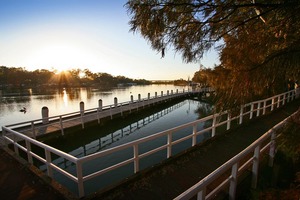 |
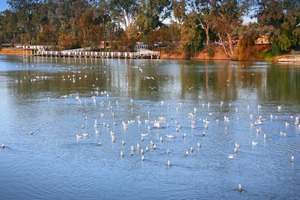 |
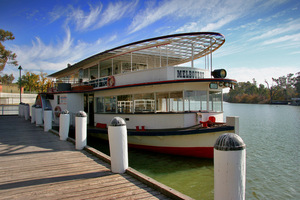 |
| Photos: MurrayRiverPhotos.com.au | ||
What is here today!
The Mildura Wharf is now home to a number of historic paddle steamers, which offer a nostalgic experience for holiday makers cruising the tranquil waters of the Murray River. It is here also that large crowds once gathered for the Great Paddle Boat Race, which saw paddleboats from as far away as Goolwa and Echuca participating.
The Paddle Steamer Melbourne was built in 1912 for the Victorian Government and worked as a snagging boat. Her role in the early days was vital to all steamers since she cleared the river and kept the main channel open for navigation. The PS Melbourne has been cruising daily at Mildura for the past 45 years and today is the only steam-driven paddle steamer operating from Mildura.
The Paddle Vessel Rothbury was built in 1881 at Gunbower, Victoria, on the River Murray. Constructed as a large and powerful towboat, she was initially employed to tow barges for the wool and logging trades and was well known, even then, as one of the fastest towboats on the river.
The Paddle Steamer Mundoo was built in 1987 at Goolwa and modelled on the original Mundoo of 1875. The Mundoo is of steel construction, featuring quality timber d残or, and is purpose-built for the tourism and function industry.
Moored further downstream is the show boat Avoca, built in 1877 at Milang, South Australia. Originally used for transporting cargo, the PS Avoca has operated continuously for 120 years. Since 1934 the show boat Avoca has been a popular dance hall, restaurant and function venue in both Murray Bridge and Mildura.
Also moored further downstream is the Paddleboat Coonawarra, which was originally a wool barge. The Coonawarra was redesigned in 1950 to be a passenger-accommodated paddleboat and is now privately owned.
Port of Mildura – Hugh King Drive, Mildura
(GPS Co-ordinates X=607,531 Y=6,216,921)
1. The Old Mildura Station Homestead ♦ 2. Mildura Homestead Cemetery ♦ 3. Rio Vista Historic House
4. Lock 11 & Mildura Weir ♦ 5. Mildura Wharf ♦ 6. Mildura Grand Hotel ♦ 7. Psyche Bend Pump Station ♦ 8. Chateau Mildura ♦ 9. Merbein
10. Further Links of the Chaffey Story ♦ The Chaffey Trail ♦ The Chaffey Trail Map

Tell your friends you found this at murrayriver.com.au!
Copyright Discover Murray 2026. This site or any portion of this site must not be reproduced, duplicated, copied, sold, resold, or otherwise exploited for any commercial purpose that is not expressly permitted by DISCOVER MURRAY.
